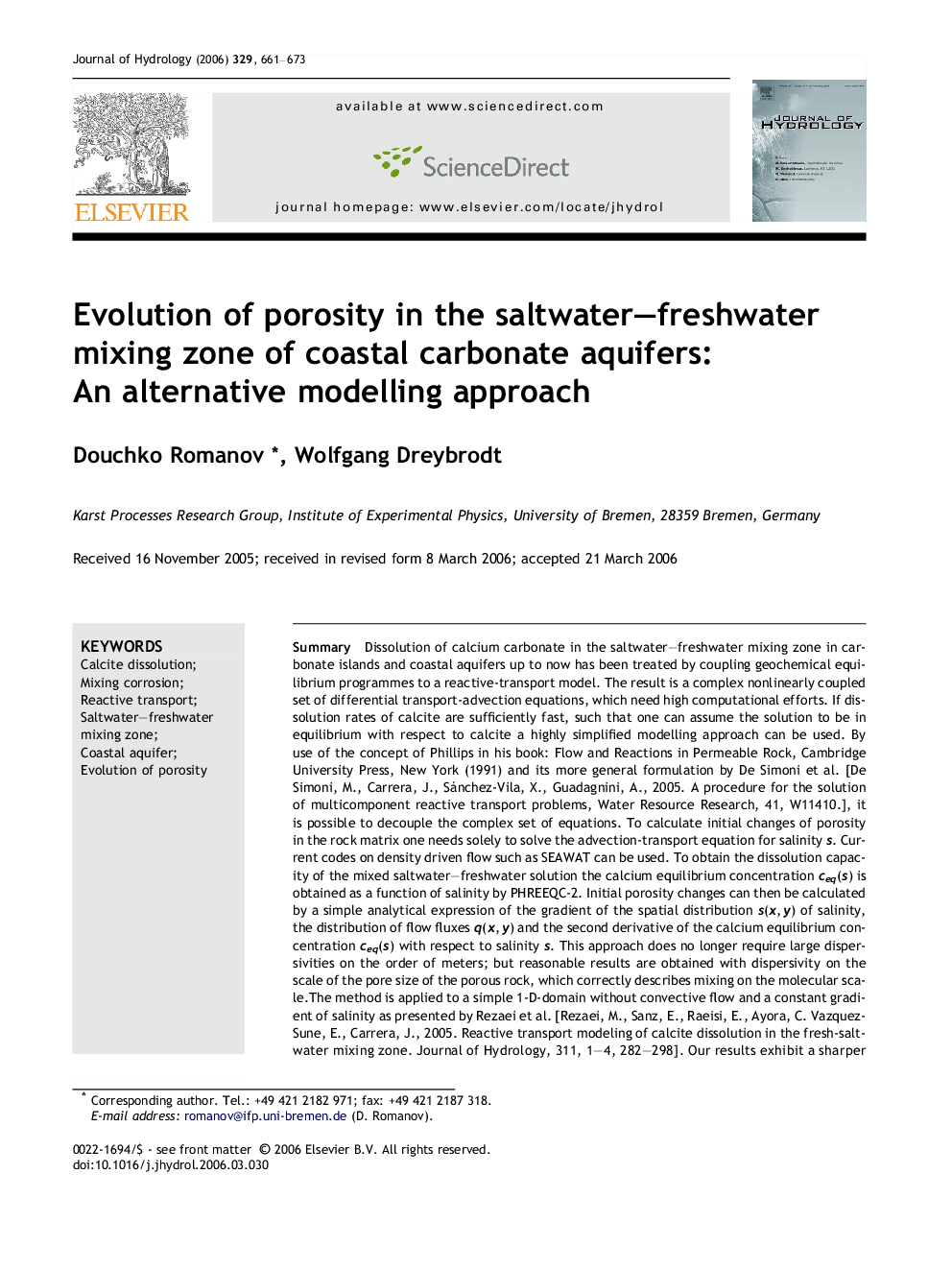| Article ID | Journal | Published Year | Pages | File Type |
|---|---|---|---|---|
| 4580507 | Journal of Hydrology | 2006 | 13 Pages |
SummaryDissolution of calcium carbonate in the saltwater–freshwater mixing zone in carbonate islands and coastal aquifers up to now has been treated by coupling geochemical equilibrium programmes to a reactive-transport model. The result is a complex nonlinearly coupled set of differential transport-advection equations, which need high computational efforts. If dissolution rates of calcite are sufficiently fast, such that one can assume the solution to be in equilibrium with respect to calcite a highly simplified modelling approach can be used. By use of the concept of Phillips in his book: Flow and Reactions in Permeable Rock, Cambridge University Press, New York (1991) and its more general formulation by De Simoni et al. [De Simoni, M., Carrera, J., Sánchez-Vila, X., Guadagnini, A., 2005. A procedure for the solution of multicomponent reactive transport problems, Water Resource Research, 41, W11410.], it is possible to decouple the complex set of equations. To calculate initial changes of porosity in the rock matrix one needs solely to solve the advection-transport equation for salinity s. Current codes on density driven flow such as SEAWAT can be used. To obtain the dissolution capacity of the mixed saltwater–freshwater solution the calcium equilibrium concentration ceq(s) is obtained as a function of salinity by PHREEQC-2. Initial porosity changes can then be calculated by a simple analytical expression of the gradient of the spatial distribution s(x, y) of salinity, the distribution of flow fluxes q(x, y) and the second derivative of the calcium equilibrium concentration ceq(s) with respect to salinity s. This approach does no longer require large dispersivities on the order of meters; but reasonable results are obtained with dispersivity on the scale of the pore size of the porous rock, which correctly describes mixing on the molecular scale.The method is applied to a simple 1-D-domain without convective flow and a constant gradient of salinity as presented by Rezaei et al. [Rezaei, M., Sanz, E., Raeisi, E., Ayora, C. Vazquez-Sune, E., Carrera, J., 2005. Reactive transport modeling of calcite dissolution in the fresh-saltwater mixing zone. Journal of Hydrology, 311, 1–4, 282–298]. Our results exhibit a sharper dissolution zone close to the freshwater side of the domain, which is caused by the properties of the second derivative of ceq(s). Recently, Singurindy et al. [Water Resources Research, 40, 2004, and correction in Water Resources Research, 41, 2005] performed dissolution experiments in a saltwater–freshwater mixing zone in a sandbox. The results from our model simulations are in good agreement to their experimental data. Finally, the modelling approach is employed to porosity evolution in homogeneous and heterogeneous carbonate islands. The results are in general agreement to earlier work. Due to the properties of the second derivative, however, the regions of active dissolution are restricted to more narrow regions.
